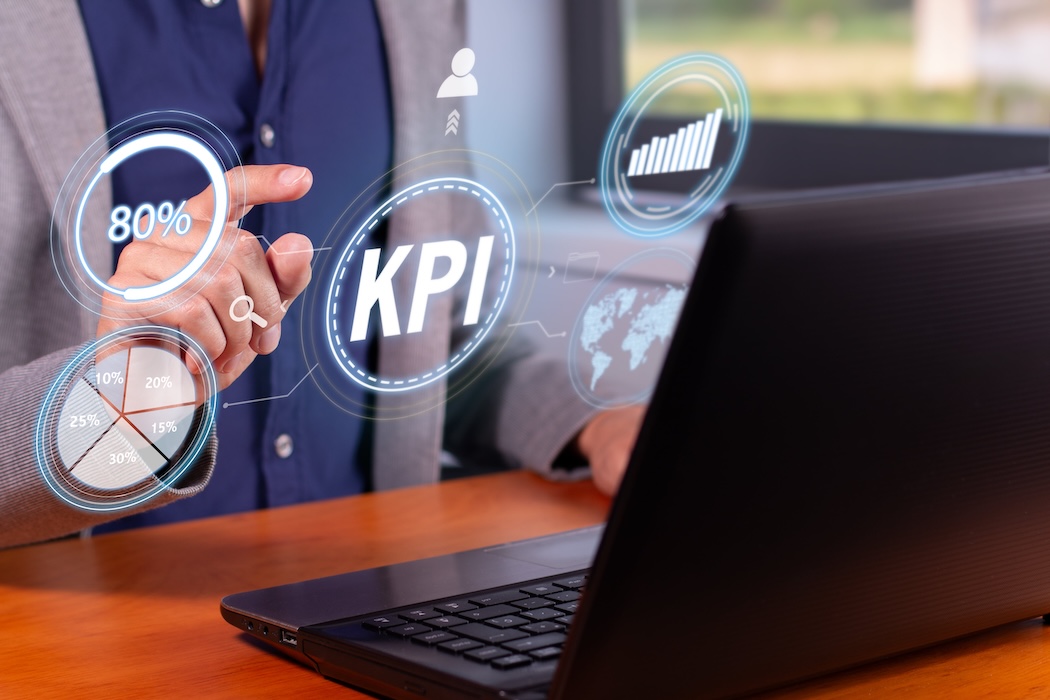Every organization has goals—but not every organization knows how to inspire people to reach them. Setting KPIs (Key Performance Indicators) is one thing. Getting individuals and teams to consistently hit, or even exceed, those targets is another story. The secret? It often comes down to one powerful, yet often overlooked, tool: recognition.
Recognition isn’t just a “feel-good” HR initiative. When used strategically, it’s a performance accelerator that connects effort to outcomes, motivates continuous improvement, and strengthens accountability across all levels of the organization. In fact, Gallup research shows that employees who receive meaningful recognition are 5x more likely to be engaged, and engaged employees drive a 21% increase in profitability.
Let’s explore how recognition can become the engine that powers your individual and team KPIs.
Understanding the Link Between Recognition and Performance
KPIs are designed to measure what matters most—whether that’s sales numbers, customer satisfaction, project delivery, or innovation milestones. But numbers alone don’t drive performance; people do.
Recognition bridges the gap between human motivation and measurable business outcomes. It does this in three key ways:
- Reinforcing desired behaviors. When you recognize specific actions tied to KPIs, employees are more likely to repeat and refine those behaviors.
- Boosting engagement and morale. Recognition fuels intrinsic motivation, which directly impacts focus, productivity, and commitment.
- Creating a culture of accountability. Public and consistent recognition encourages everyone to take ownership of results.
In short, recognition translates KPIs from cold metrics into shared, motivating goals.
Step 1: Align Recognition With Business Goals
Recognition programs often fail when they focus solely on “being nice” rather than being strategic. To make recognition drive KPIs, start by aligning it with your organization’s mission, goals, and metrics.
Ask yourself:
- What are our top business priorities this quarter or year?
- What specific actions or behaviors support these priorities?
- How can we make recognition reflect those actions?
For instance:
- If one of your KPIs is reducing customer response times by 20%, recognize employees who demonstrate proactive communication or find ways to streamline workflows.
- If your team KPI is boosting product innovation, celebrate those who bring forward new ideas or pilot experimental approaches—even if not every idea succeeds.
By tying recognition directly to the goals that matter most, you transform appreciation from a “nice gesture” into a performance-driving system.
Step 2: Recognize the How, Not Just the What
Too often, recognition focuses only on results—hitting a target, closing a sale, or completing a project. But the process behind those achievements is just as important. Recognizing how people work can shape culture and drive sustainable success.
For example:
- Acknowledge collaboration and teamwork that lead to shared KPI success.
- Highlight innovative thinking or problem-solving that improves performance metrics.
- Celebrate consistency and reliability, not just “big wins.”
When recognition spotlights behaviors aligned with company values—like creativity, ownership, or customer focus—it teaches others what success looks like beyond the numbers.
Pro tip: Use specific, behavior-based language when recognizing someone. Instead of “Great job on the report,” say “Your analysis helped us identify cost-saving opportunities that put us closer to our quarterly goal.”
Step 3: Empower Peer-to-Peer Recognition
Recognition shouldn’t just flow from the top down. Peer-to-peer recognition creates a culture where appreciation is everyone’s responsibility—and that culture drives stronger KPI results.
According to SHRM, organizations with peer-to-peer recognition programs are 35% more likely to report lower turnover and 41% more likely to see increases in customer satisfaction.
Why? Because peer recognition:
- Builds collaboration and trust.
- Creates visibility for unsung contributions.
- Reinforces shared accountability toward team goals.
Tools like the Karma recognition bot make this process seamless. Team members can instantly give “karma points” or shoutouts in real time—celebrating achievements as they happen, and linking them to key objectives.
For example: “Kudos to Maria for jumping in to help with the client presentation—your insights helped us hit our engagement KPI this week!”
Step 4: Use Recognition Data to Track Progress
Recognition isn’t just qualitative—it’s a rich source of data. By tracking recognition activity, you can identify trends, spot high performers, and measure the behaviors that correlate with KPI success.
Look for:
- Frequency of recognition: Are certain departments or teams under-recognized?
- Type of recognition: Which KPI-linked behaviors are most celebrated?
- Network effects: Who are the most active recognizers or most recognized individuals?
This data can be combined with performance metrics to uncover powerful insights. For example, if teams that give and receive more recognition consistently outperform others on KPIs, you’ve got clear proof that recognition drives measurable results.
With digital platforms like Karma, these analytics are at your fingertips, turning appreciation into actionable intelligence.
Step 5: Recognize Teams, Not Just Individuals
While individual recognition boosts personal motivation, team-based recognition strengthens collaboration—especially for shared KPIs.
When goals depend on multiple people working together (like project delivery, revenue growth, or product launches), celebrating team milestones fosters unity and accountability. It reminds everyone that success is a collective effort.
Team recognition can take many forms:
- A shoutout in a company meeting for reaching a shared milestone.
- A message of appreciation from leadership recognizing cross-department collaboration.
- A group reward, such as a team lunch, wellness day, or bonus points in your recognition platform.
The key is to highlight how the team worked together, reinforcing the collaboration that made the achievement possible.
Step 6: Make Recognition Timely and Consistent
Timing is everything when it comes to motivation. Recognition has the greatest impact when it happens close to the behavior or achievement being celebrated.
In fact, according to OC Tanner Institute, recognition that occurs immediately after a positive action makes employees 31% more likely to repeat it.
Consistency matters too. Recognition shouldn’t be reserved for quarterly meetings or annual awards—it should be an ongoing habit. When appreciation becomes part of daily communication, employees stay continuously aligned with their goals.
Digital tools like Karma help make recognition spontaneous, easy, and consistent—keeping momentum alive across remote and hybrid teams.
Step 7: Tailor Recognition to Individual Motivations
Every employee is different. Some crave public acknowledgment; others prefer private appreciation. Some value rewards, while others thrive on words of affirmation. Understanding these differences helps recognition resonate more deeply—and drive stronger KPI performance.
Managers can make this happen by:
- Asking team members how they prefer to be recognized.
- Balancing public shoutouts with private messages.
- Offering personalized rewards that align with each individual’s values (e.g., career growth, time off, or development opportunities).
When recognition feels personal and genuine, it builds emotional commitment to goals—turning KPIs from numbers into meaningful challenges.
Step 8: Create a Feedback Loop Between Recognition and KPIs
The most effective organizations treat recognition as part of their performance management system. Recognition data can inform coaching conversations, performance reviews, and goal-setting sessions.
For example:
- If someone consistently receives recognition for mentoring others, that strength can be reflected in their development plan or leadership path.
- If a team frequently earns kudos for meeting deadlines, that consistency can serve as a benchmark for other teams.
Integrating recognition into KPI discussions makes performance management more human-centered—and far more motivating.
The Results: Recognition as a KPI Multiplier
When recognition becomes part of the rhythm of work, the results are powerful:
- Increased productivity: Employees who feel valued are 31% more productive (WorkHuman).
- Higher engagement: Recognized employees are 5x more likely to stay engaged and enthusiastic.
- Better collaboration: Teams that celebrate wins together experience stronger alignment and trust.
- Improved retention: Recognition reduces turnover rates by up to 41% (Bersin by Deloitte).
Recognition doesn’t just complement KPIs—it multiplies their impact. It transforms metrics from management tools into motivational forces.
Final Thoughts
At its best, recognition is more than a thank-you—it’s a performance strategy. When employees understand how their daily efforts contribute to company goals, and when those efforts are acknowledged meaningfully, the results are extraordinary.
Whether you’re tracking individual KPIs like sales, or team KPIs like customer satisfaction or innovation rates, recognition is the glue that connects human motivation to measurable success.
With tools like the Karma recognition bot, it’s easier than ever to make recognition part of your team’s culture. By celebrating progress—big and small—you don’t just meet your KPIs. You build a thriving, motivated, high-performing organization.


 Using Recognition to Encourage Smart Risk-Taking and Innovation
Using Recognition to Encourage Smart Risk-Taking and Innovation